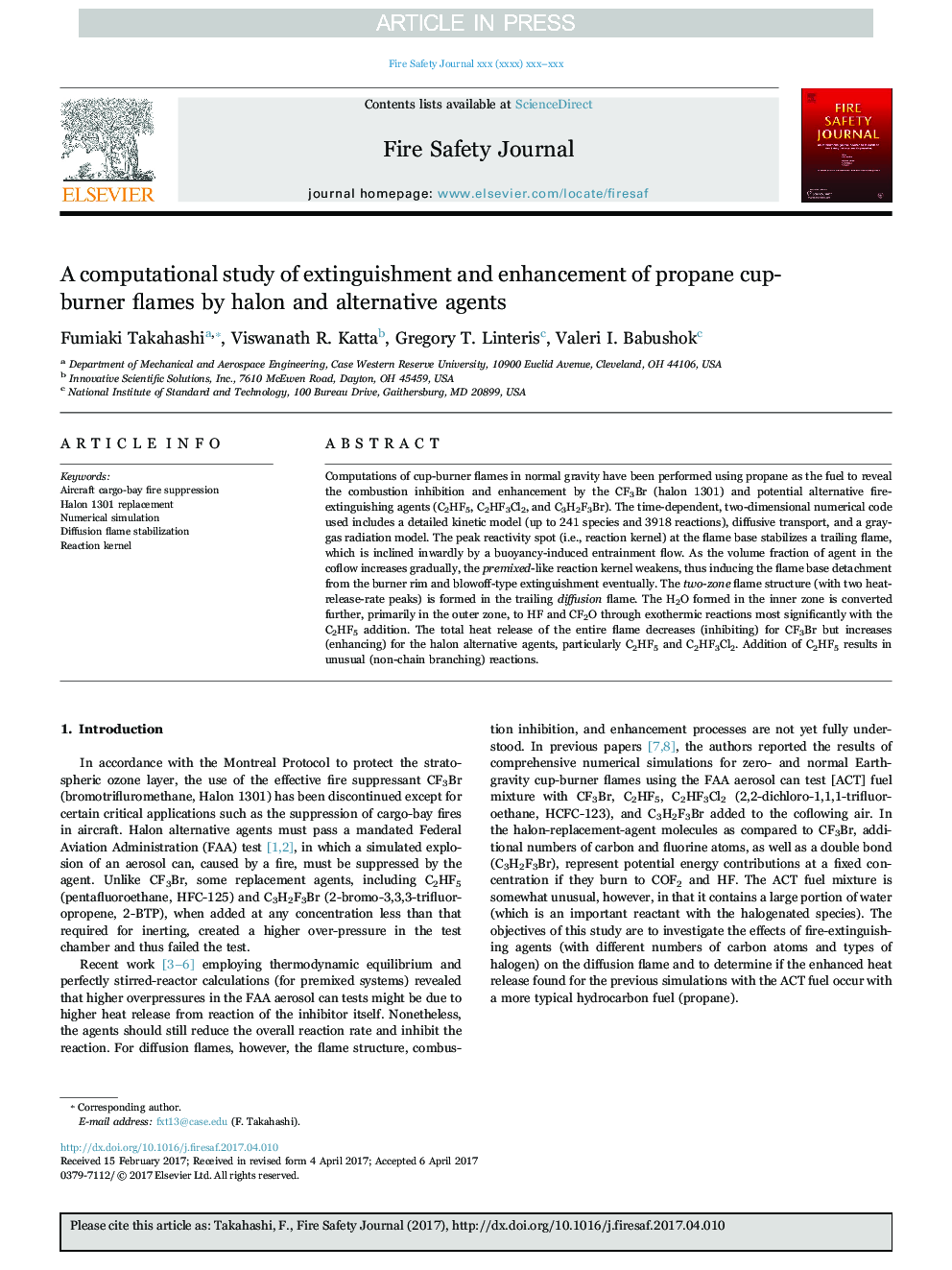| کد مقاله | کد نشریه | سال انتشار | مقاله انگلیسی | نسخه تمام متن |
|---|---|---|---|---|
| 4920953 | 1429212 | 2017 | 7 صفحه PDF | دانلود رایگان |
عنوان انگلیسی مقاله ISI
A computational study of extinguishment and enhancement of propane cup-burner flames by halon and alternative agents
ترجمه فارسی عنوان
یک مطالعه محاسباتی از خاموش شدن و افزایش شعله های آتش فشرده پروپان با استفاده از هالون و عوامل جایگزین
دانلود مقاله + سفارش ترجمه
دانلود مقاله ISI انگلیسی
رایگان برای ایرانیان
موضوعات مرتبط
مهندسی و علوم پایه
سایر رشته های مهندسی
مهندسی عمران و سازه
چکیده انگلیسی
Computations of cup-burner flames in normal gravity have been performed using propane as the fuel to reveal the combustion inhibition and enhancement by the CF3Br (halon 1301) and potential alternative fire-extinguishing agents (C2HF5, C2HF3Cl2, and C3H2F3Br). The time-dependent, two-dimensional numerical code used includes a detailed kinetic model (up to 241 species and 3918 reactions), diffusive transport, and a gray-gas radiation model. The peak reactivity spot (i.e., reaction kernel) at the flame base stabilizes a trailing flame, which is inclined inwardly by a buoyancy-induced entrainment flow. As the volume fraction of agent in the coflow increases gradually, the premixed-like reaction kernel weakens, thus inducing the flame base detachment from the burner rim and blowoff-type extinguishment eventually. The two-zone flame structure (with two heat-release-rate peaks) is formed in the trailing diffusion flame. The H2O formed in the inner zone is converted further, primarily in the outer zone, to HF and CF2O through exothermic reactions most significantly with the C2HF5 addition. The total heat release of the entire flame decreases (inhibiting) for CF3Br but increases (enhancing) for the halon alternative agents, particularly C2HF5 and C2HF3Cl2. Addition of C2HF5 results in unusual (non-chain branching) reactions.
ناشر
Database: Elsevier - ScienceDirect (ساینس دایرکت)
Journal: Fire Safety Journal - Volume 91, July 2017, Pages 688-694
Journal: Fire Safety Journal - Volume 91, July 2017, Pages 688-694
نویسندگان
Fumiaki Takahashi, Viswanath R. Katta, Gregory T. Linteris, Valeri I. Babushok,
